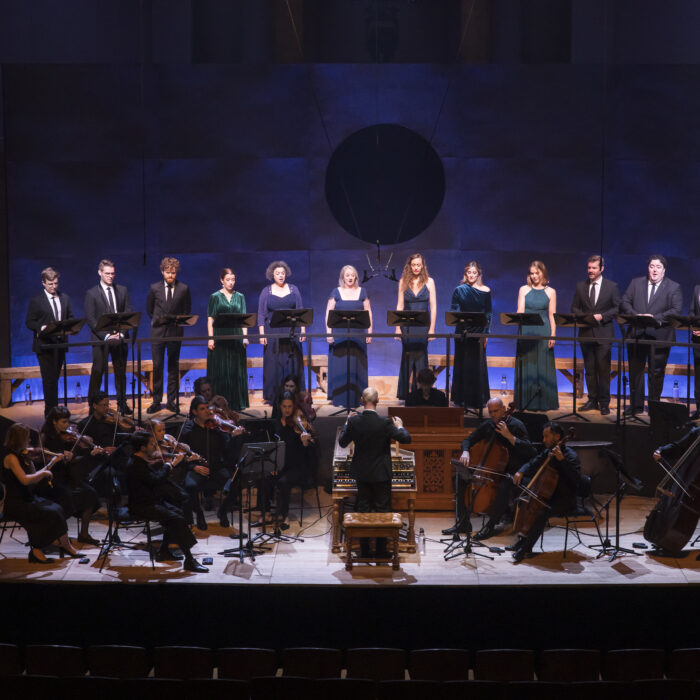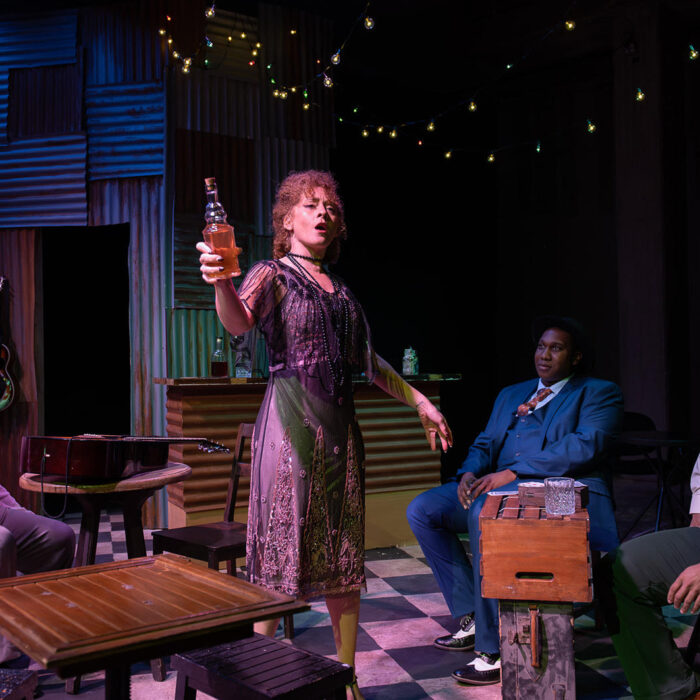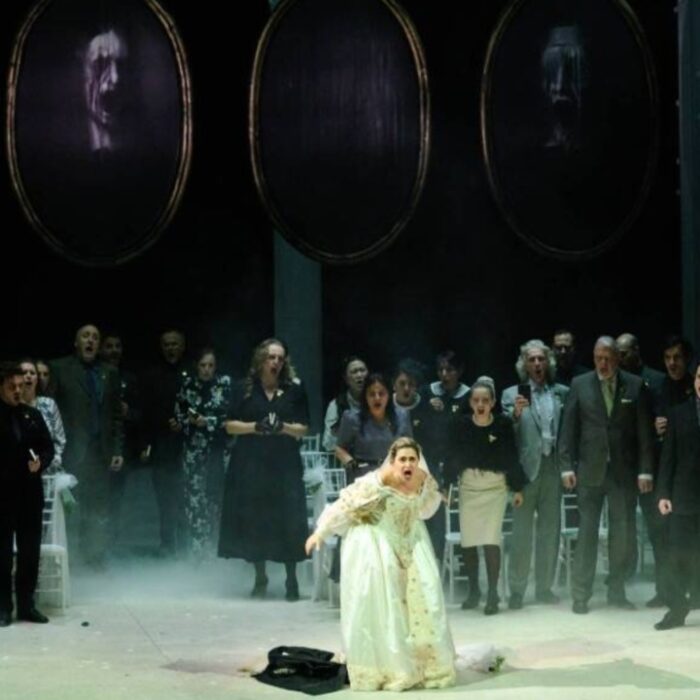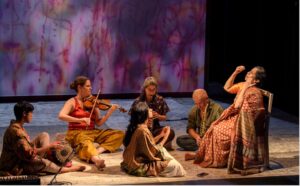
Festival Aix-en-Provence 2025 Review: The Nine Jewelled Deer
By João Marcos CopertinoOne of the legacies of Pierre Audi’s tenure as director of the Aix-en-Provence Festival is the festival’s commitment to a continuous challenging of what opera can mean. His provocations extended from calling filmic versions of Stravinsky’s ballets operas, to a rendition of Mahler’s Symphony No.2 directed by Romeo Castellucci, or even, last season, a musical of William Kentridge’s “The Great No, The Great Yes.” In a similar spirit, this year’s festival advertises as an opera a new work by Sivan Eldar and Ganavya Doraiswamy (text by Lauren Groff) called “The Nine Jewelled Deer.”
Usually, the mere mention of the name Peter Sellars as director would imply that we were seeing an opera, but there is a catch: there is no opera singer in the cast. The vocalists are two traditional Indian singers, Ganavya Doraiswamy (one of the composers) and Aruna Sairam. The proposition, then, is simple: to keep pursuing Audi’s inquiry—is it possible to have an opera senza canto? Or, in this case, senza canto lirico?
The question is harder than one might think. In many ways, the proposed new title has very little that is operatic. It features a small selection of extraordinary musicians as an ensemble, and its narrative is rather confusing. The whole story is based on the homonymous tale from the Jātaka, but its approach to narration is very confusing, making sense solely in the very final moments—after a couple of hours of music.
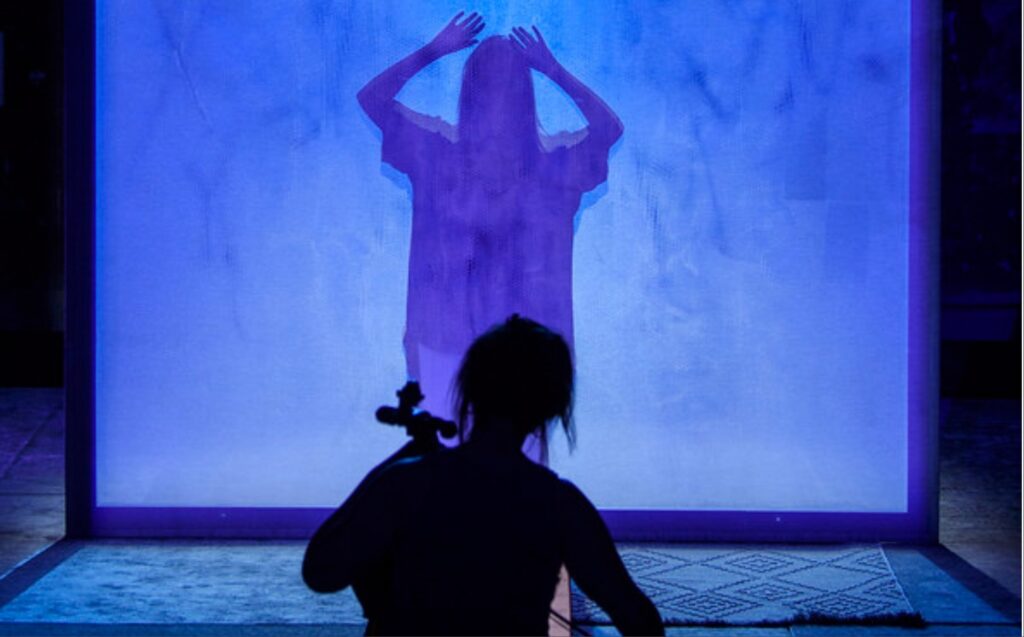
(Photo: Ruth Walz)
Nevertheless, there are some elements of the “opera” that indeed move toward an opera senza canto—or whatever comes closest to that idea. Much of the storytelling happens through the decision to make the musical instruments act as characters. They function not so much as instruments in a symphonic poem, but rather as if there were a fully staged opera—let’s say, “Tosca”—and instead of hearing Scarpia and Cavaradossi, we had a trombonist and a clarinetist on the stage, playing their parts. Of course, I cannot know what words would be exchanged between the instruments deployed by Eldar and Doraiswamy, but their “conversations”—sometimes sounding improvised, in a “jazzy way,” and sometimes clearly scripted—carried the hope of representing a true dialogue: an exchange of meanings that could have been expressed in words but that was, decidedly, written without them.
Because of this capacity to make instruments speak in a theatrical manner, “The Nine Jewelled Deer” feels perhaps more operatic than “The Great No, The Great Yes” or even than Castellucci’s Mahler—though that does not by any means make it any better than they were.
This opera concept is not very evident at the beginning of the piece. At first, Doraiswamy asks the audience the most unimaginable thing: “voulez-vous chanter avec moi?” She explains that, where she is from, singing together is a form of prayer and an expression of love. After a pop-ish song in which the tale of the Deer is explained, gem by gem, the audience sat back, thinking that all the “opera” then would happen on the stage.
Following a series of interactions between the instruments, we then often see them playing in an airy manner, trying to communicate with one of the two vocalists. From what I gathered, Sairam is meant to be Doraiswamy’s grandmother, a skilled musician whose orchestra, somehow, inhabits her kitchen.
That said, the work seems conceptually grounded, but I am perhaps not the audience for it; its Buddhist argumentation might work better on some friends of mine than on me. To be fair, even reading Hermann Hesse’s “Siddhartha” was too laborious for my extremely South American mind. It seemed, however, that the new age crowd in the theater understood very well the religious connotations of the opera and were ready to play along with it. This is what matters.
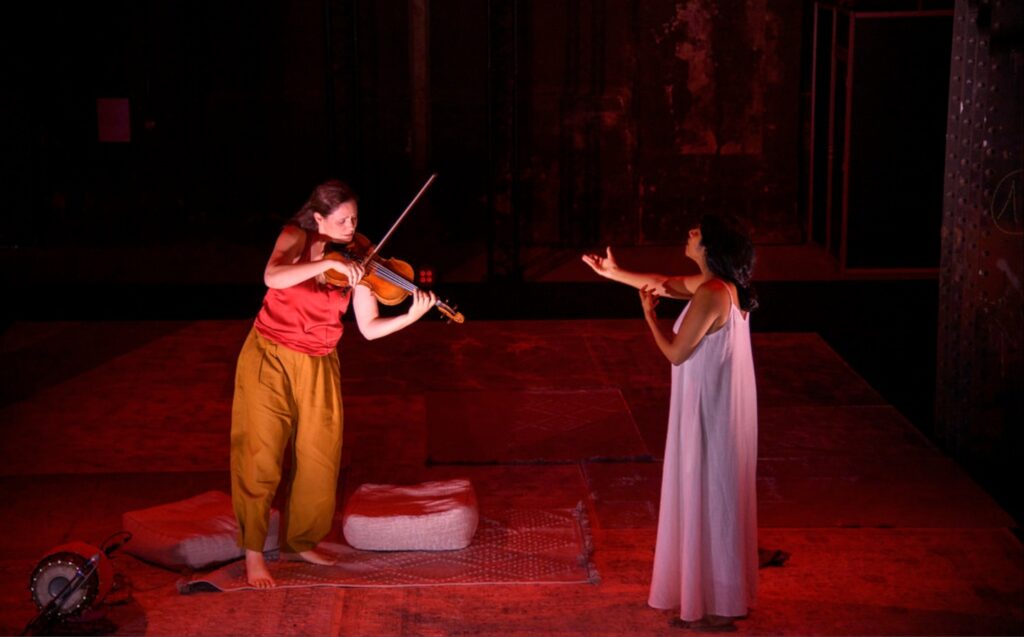
(Photo: Ruth Walz)
The music can be very interesting, but also very labyrinthine. I knew it would all take more or less two hours, but I could not tell how much time had passed. The passages of improvisation often led my mind a bit away from the present moment, but it was evident that the stage musicians were extremely skilled—especially Rajna Swaminathan on percussion, Sonia Wieder-Atherton on cello, and Dana Barak on clarinet.
To the performers’ credit, this opera’s music is not a showcase of virtuosic playing. They are invited to shine especially in their effort to convey meaning, even when the meaning is just the search for words—the extremely subtle tones and the almost-not-playing sonority. All their sounds share the common schticks of current avant-garde music: quiet noise, loud noise music, refusal to fully satisfy tonality, imitation of sounds of the wild (though the latter has been around since music began). Yet, everything sounds fine here—mannered, but not shallow.
Most of the opera was very burdensome to me, and to more than a few audience members who left early—I could hear them making their way out and significantly slamming the door. But there was one scene that was perhaps the only truly theatrical, operatic moment of the night. I even dare to say it was cathartic to some.
In her grandmother’s kitchen, Doraiswamy sits on the floor with all the other instruments, while Sairam, her grandmother, from her chair, sings and seems to teach the others to sing. It is well known how good the pitch training of traditional Indian singing is, but what I think we seldom see is the intense connection between the voice and the act of making the instruments speak. It was as if Sappho’s most famous fragment finally made sense: “Radiant lyre, speak to me, become a voice!”
